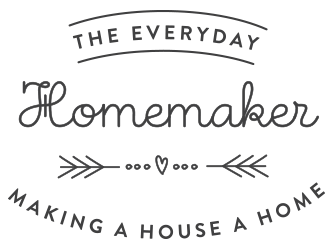What is your annual budget for cleaning supplies? Even with the help of coupons or purchasing the products at a warehouse club, the total cost by the end of the year can be hefty. One way to save money is to use resources already found in your pantry or medicine cabinet and make them do double duty as cleaning agents.This blog post was created to help you identify which products can replace some of the pricey name-brand products.The natural products are also safer and healthier to use.
CLEANING PRODUCTS FROM YOUR PANTRY
White Vinegar
White vinegar is a mild acid.
It is a good all-purpose cleaner and deodorizer.
Mixed with water, it cuts grease and dissolves film on glassware and windows.
Baking Soda
Cut the lid off the box and leave on the back of a shelf in both the freezer and refrigerator to absorb odors. Replace several times a year.
If you want a more attractive look purchase a shaker with large holes.
Its mild abrasiveness provides a good scouring powder.
Light soil and stains on sinks, counters, dishware, and stovetops can be removed.
Mixed with water it makes an all-around, light-duty cleaner.
Ammonia
This heavy-duty cleaning liquid agent is effective for cleaning all kinds of things around the house.
It is available in both plain and sudsy formulas.
Ammonia is poisonous and the odor and fumes can be irritating, so use with caution in a well ventilated area.
Salt
A mild abrasive, salt can be used to absorb grease or wine stains.
Salt softens water.
Hydrogen Peroxide
Hydrogen peroxide can be used as a disinfectant.
It can also function as a bleaching substitute.
The procedures for preparing the cleaning solutions are simple and quick. You do not need to be a chemist to mix them successfully —and the best part is that, in most cases, they are much safer than many of the commercial products that contain toxins.
CLEANING PRODUCT SOLUTIONS
All-purpose Liquid Cleaner
Mix together 1/2 cup white vinegar, 1 cup plain household ammonia, 1/4 cup baking soda, 1 gallon warm water.
Dispense in a spray bottle and use it just like you would a commercial brand such as Formula 409.
Clogged Drain Treatment
Pour 1/2 cup of salt and 1/2 cup of baking soda, followed by 4 cups boiling water, into the drain.
Allow to sit overnight, if possible.
Greasy drains usually respond to this treatment.
Floor Cleaner for Ceramic and Vinyl Floors
Mix together 1 cup white vinegar and 1 gallon warm water.
Use the solution to mop ceramic tile and all types of vinyl floors.
Rinsing is unnecessary.
Furniture Polish
Combine 2 parts olive or vegetable oil and 1 part lemon juice or white vinegar in a glass jar.
Seal tightly.
Shake well before using sparingly.
Apply a thin coat with a soft cloth, then buff well.
Garbage Disposal Cleaner
Empty the contents of your ice-maker into the garbage disposal side of your sink.
Remove the stopper from the opposite side.
Turn on the hot water and the disposal. The ice will clean the inside of your disposal unit.
This is a highly recommended monthly maintenance technique that will keep the disposal unit running well.
Mildew Removal
Use white vinegar full strength or isopropyl alcohol full strength and apply with an old toothbrush or nail brush.
Allow to sit for a while, depending on the severity of the situation.
Rinse well with clear water.
Oven Cleaner
Place one cup ammonia in a glass or ceramic bowl.
Put the bowl on the bottom of a cold oven and leave it in the closed oven overnight. Perhaps you should make a warning sign to alert family members that cleaning is in process.
The next morning, pour the ammonia into a pail of warm water and use this solution and a sponge to wipe away the loosened grime.
Be careful of the fumes. They will be strong when you first open the oven door. You may want to wear a mask.
Toilet Bowl Cleaner
Mix together 1/4 cup baking soda, 1/4 cup liquid detergent and 1/4 cup warm water.
Use a toilet brush to distribute the cleaner inside the bowl.
Allow to soak a few hours or overnight, and then swish it around with the brush before emptying the bowl.
Window, Glass and Mirror Cleaner
Mix together 1/2 cup plain ammonia, 1/2 cup vinegar, 2 tablespoons cornstarch, and 1 gallon warm water.
Dispense in spray bottle.
A Word of Caution
Liquid chlorine bleach is an inexpensive, effective disinfectant. However, never mix chlorine bleach with any other product. You could create deadly chlorine gas. Always label the products you create and keep them tightly covered and out of the reach of children and pets. Storage closets or cupboards containing cleaning solutions should have child-proof latches installed on the doors.
THE EVERYDAY HOMEMAKER’S MONTHLY MEDITATION THOUGHT
God has said, "I have loved you with an everlasting love; therefore I have continued my faithfulness to you” (Jeremiah. 31:3).
Therefore I may boldly say, "I am a deeply loved woman."
The February post provides the introductory description of the monthly homemaking hints if you wish to place this post in context.
Visit The Everyday Homemaker next week as we focus on "The Incredible Search."
Blessings on your week as you focus on making your house a home!
